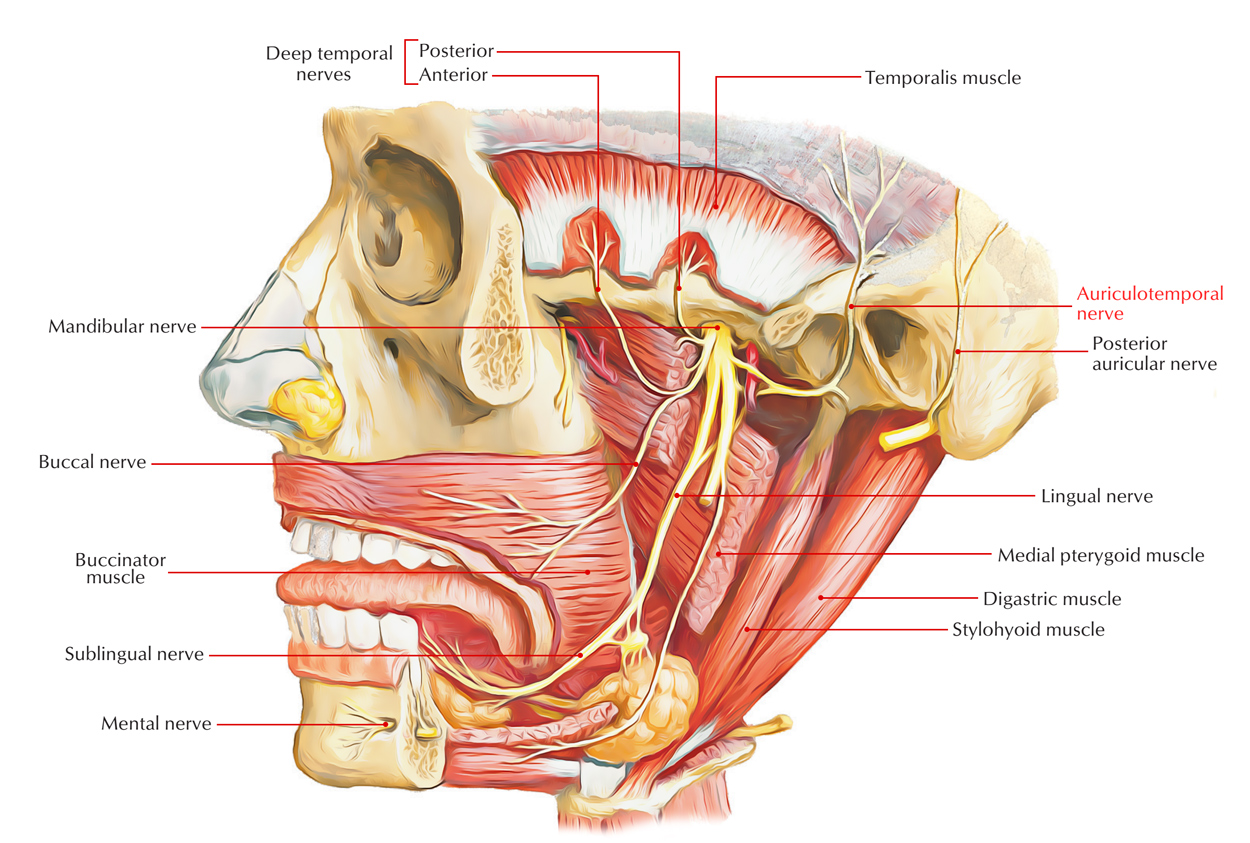The auriculotemporal nerve emerges as two roots, which near the middle meningeal artery travel posteriorly by rising upwards from the maxillary artery towards the foramen spinosum and it is the first branch of the posterior trunk of the mandibular nerve.

Auriculotemporal Nerve
Insertion
The auriculotemporal nerve passes first among the tensor veli palatini muscle and the upper head of the lateral pterygoid muscle, and afterwards in the middle the sphenomandibular ligament as well as the neck of the mandible. It turns laterally near the neck of the mandible and afterwards rises up deep towards the parotid gland in the middle of the temporomandibular joint and ear.
Function
From skin over a large area of the temple, the terminal branches of the auriculotemporal nerve carry general sensation.
Also, the auriculotemporal nerve plays a part in sensory nerve supply:
- External ear
- External auditory meatus
- Tympanic membrane
- Temporomandibular joint
It also delivers postganglionic parasympathetic nerves from the glossopharyngeal nerve [IX] to the parotid gland.
Distribution
- Its auricular divisions supply skin of the tragus, upper part of the pinna, external auditory meatus and tympanic membrane.
- The lower parts of these zones are supplied by great auricular nerve and auricular branch of the vagus nerve.
- Its articular branches supply the temporomandibular joint.
- Its superficial temporal branches supply the skin of the temple.
- It also supplies secretomotor fibres towards the parotid gland.

 (55 votes, average: 4.58 out of 5)
(55 votes, average: 4.58 out of 5)